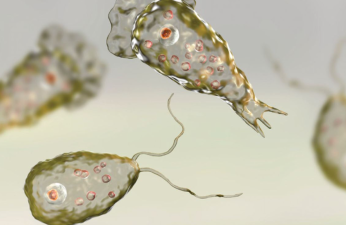Every year, June 9th marks a significant moment of global awareness of women's health—World Women's Reproductive Health Day—aiming to raise public awareness of women's reproductive health issues and encourage women to enhance their health awareness and self-care skills.

The Current State of Women's Health Issues
Women play multiple roles in society, yet their health issues are often overlooked. From a physiological perspective, women's unique menstrual cycles and pregnancy present numerous challenges to their bodies.
Irregular menstruation is a common problem faced by many women. According to surveys, approximately 10% of women experience menstrual cycle irregularities and dysmenorrhea to varying degrees. This not only impacts women's daily lives, causing mood swings and physical discomfort, but can also lead to other gynecological problems over the long term.
Pregnancy is a particularly challenging process for women's health. Both pregnancy and childbirth carry certain risks. In some remote areas, due to limited medical resources, maternal mortality rates are relatively high. Even in areas with relatively abundant medical resources, some women experience problems such as postpartum depression. Statistics show that the incidence of postpartum depression is approximately 10%, severely impacting women's physical and mental health and family relationships.
In terms of gynecological diseases, the incidence of major diseases such as breast cancer and cervical cancer is on the rise.
Breast cancer has become one of the most common cancers among women worldwide, with tens of thousands of new cases each year.
Cervical cancer is also a major health threat to women, and its incidence is closely linked to HPV infection.
Reasons for the Neglect of Women's Health Issues
- Social Attitudes
Traditionally, women are often viewed as accessories to the family, and their health needs are often relegated to a secondary priority. In family decision-making, women's health may not receive sufficient consideration, and the overall interests of the family may be prioritized over the health of the individual woman.
- Economic Factors
Some women, due to financial constraints, cannot afford regular checkups and high-quality medical services. Some women in rural areas or from impoverished families lack even basic medical coverage, leading them to choose to endure health issues rather than seek prompt medical attention. 3. Uneven Distribution of Medical Resources
There are significant disparities in medical resources across regions and between urban and rural areas. Large cities concentrate a significant amount of high-quality medical resources, while primary healthcare facilities are relatively short on equipment, technology, and professionals. This makes it difficult for women, especially those in remote areas, to receive timely and effective diagnosis and treatment.

What can be done?
- Individuals: Actively learn about physical and reproductive health; conduct regular physical examinations, such as gynecological exams, breast cancer screening, and cervical cancer screening (combined HPV and TCT screening), to detect breast and cervical cancer early, allowing for early detection and treatment; communicate openly and proactively with partners or doctors about health needs and concerns; cultivate a healthy lifestyle, such as a balanced diet, regular exercise, and adequate sleep; and get vaccinated, such as the HPV vaccine, as early as possible.
- Socially:
Discuss reproductive health openly and scientifically; advocate for high-quality services, demanding universal, affordable, and confidential reproductive health services; promote education and support comprehensive sex education in schools and communities.
Women's reproductive health is not a "private matter" but a core issue related to human reproduction and social development.
On World Women's Reproductive Health Day, let us work together to spread knowledge and support action.







